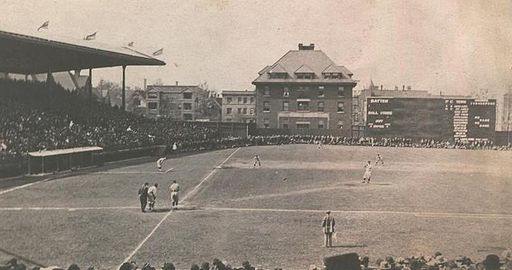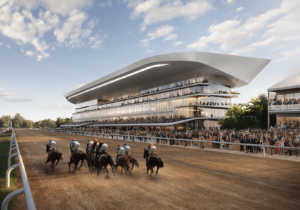Wrigley Field, the 106-year old Major League Baseball mecca on Chicago’s North Side, was designated last week as a National Historic Landmark by the National Park Service. The somewhat rare designation also means that the iconic ballpark, home to National League franchise the Chicago Cubs since 1916, is also automatically listed on the National Register of Historic Places. Very few, roughly 3 percent, of the over 90,000 NRHP-listed sites across the country also gain National Historic Landmark recognition.
Designed by Zachary Taylor Davis, the stadium is the second oldest MLB stadium behind Boston’s Fenway Park, which was also added to the NRHP in 2012 but lacks National Historic Landmark status. With the inclusion of Wrigley Field, there are now 89 National Historic Landmarks in the state of Illinois with many—the Adler Planetarium, Marquette Building, Shedd Aquarium, and the Sears, Roebuck and Company building to name just a few—being in Chicago. Soldier Field, home to the Chicago Bears and the oldest stadium in the National Football League, was also designated as a National Historic Landmark in 1987 but delisted in 2006 following an extensive renovation completed three years prior.
“The historical significance of Wrigley Field is interwoven into our nation’s story and a key part of what has become America’s beloved pastime for over a century,” said U.S. Secretary of the Interior David L. Bernhardt in a press release. “It is with great enthusiasm that I designate this iconic national treasure, the site of many legendary events, innovations and traditions in baseball history, as a National Historic Landmark.”
Wrigley Field was also was named a Chicago Landmark in 2004.

Wrigley Field didn’t become Wrigley Field until 1927—well over a decade since the first pitch was thrown at the beloved ballpark. From 1920 through 1926, it was known as Cubs Park and, before that, it was named Weeghman Park after Chicago restaurant owner and sports executive Charles Weeghman who opened the stadium in April 1914 for his Chicago Whales. It’s also the last surviving ballpark associated with the Federal League, a very short-lived third MLB league—the Whales were a member alongside other curiously named teams like the Newark Peppers, Baltimore Terrapins, and St. Louis Terriers—that rivaled the National and American Leagues.
The naming of Wrigley Field as a National Historic Landmark is, of course, a cause for Chicagoans and admirers of historic American ballpark, but also a huge financial boon for the Ricketts family, who bought both the Cubs and Wrigley Field in 2009. While Tom Ricketts, chairman of the Cubs, has steered clear of politics, his brother and team co-owner Todd Ricketts is heavily involved in conservative fundraising and currently serves as finance chairman of the Republican National Committee. Both Tom and Todd Ricketts are the sons of Nebraska-born TD Ameritrade founder and billionaire Joe Ricketts.
For Cubs fans already anguished over the intimate ties between Donald Trump and the team’s ownership, news of the Wrigley Field’s National Historic Landmark designation will likely come with a bitter aftertaste as the Ricketts, who first applied for federal landmark designation in 2013, are now eligible for millions of dollars in historic preservation tax credits. As a team spokesperson told the Chicago Tribune’s Blair Kamin last year, these credits will likely range in the proverbial ballpark of $100 to $125 million.
As noted by Kamin earlier this week, the designation represents a “vindication” of sorts following the completion of a privately funded $1 billion renovation of the park that proved controversial with some longtime times fans and neighbors of the park. The renovation also sparked a federal probe regarding possible ADA compliance violations.

Speaking to the Tribune, Preservation Chicago executive Ward Miller explained that the National Historic Landmark designation could be “very beneficial long-term to them [the Ricketts family] financially.”
The designation also doesn’t necessarily make Wrigley Field immune to future demolition or significant alteration if private funds are used to carry out such actions. However, the stadium’s status as a Chicago city landmark would throw a wrench into any dramatic potential changes down the line as substantial design overhauls at the park must be green-lit by the Commission for Chicago Landmarks.
It’s worth noting that no further overhauls that could raise the ire of preservationists and Cubs fans—or lead to the delisting of the park, like was the case with Soldier Field—are known to be on the horizon following the multi-year renovation project that wrapped up last year. “Wrigley Field is a special place in the hearts of generations of fans,” said Tom Ricketts in the Department of the Interior news release announcing the National Historic Landmark designation. “That’s why, from our first day as owners, we committed to preserving Wrigley, which will now take its well-earned place in the lineup of American history and culture as a national treasure.”











